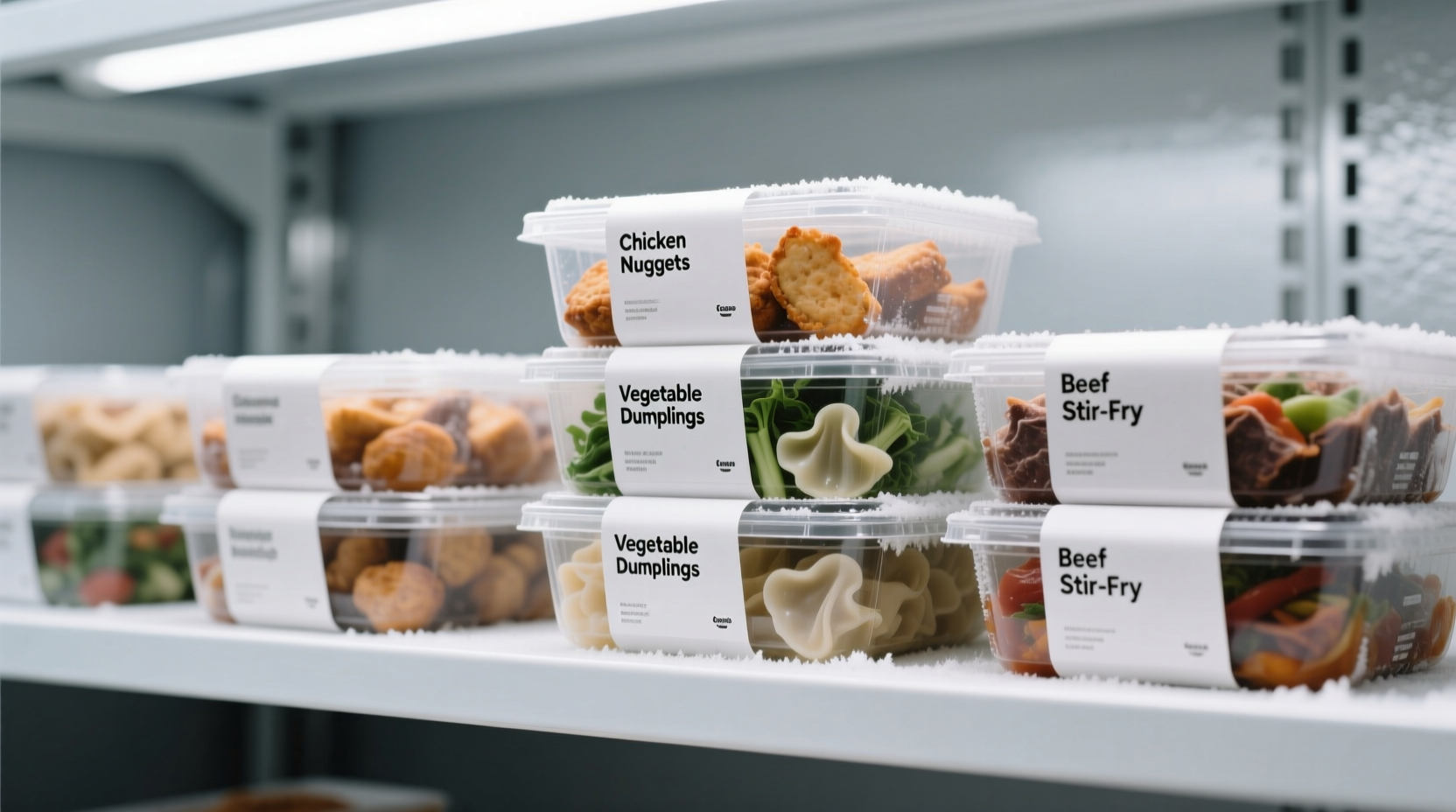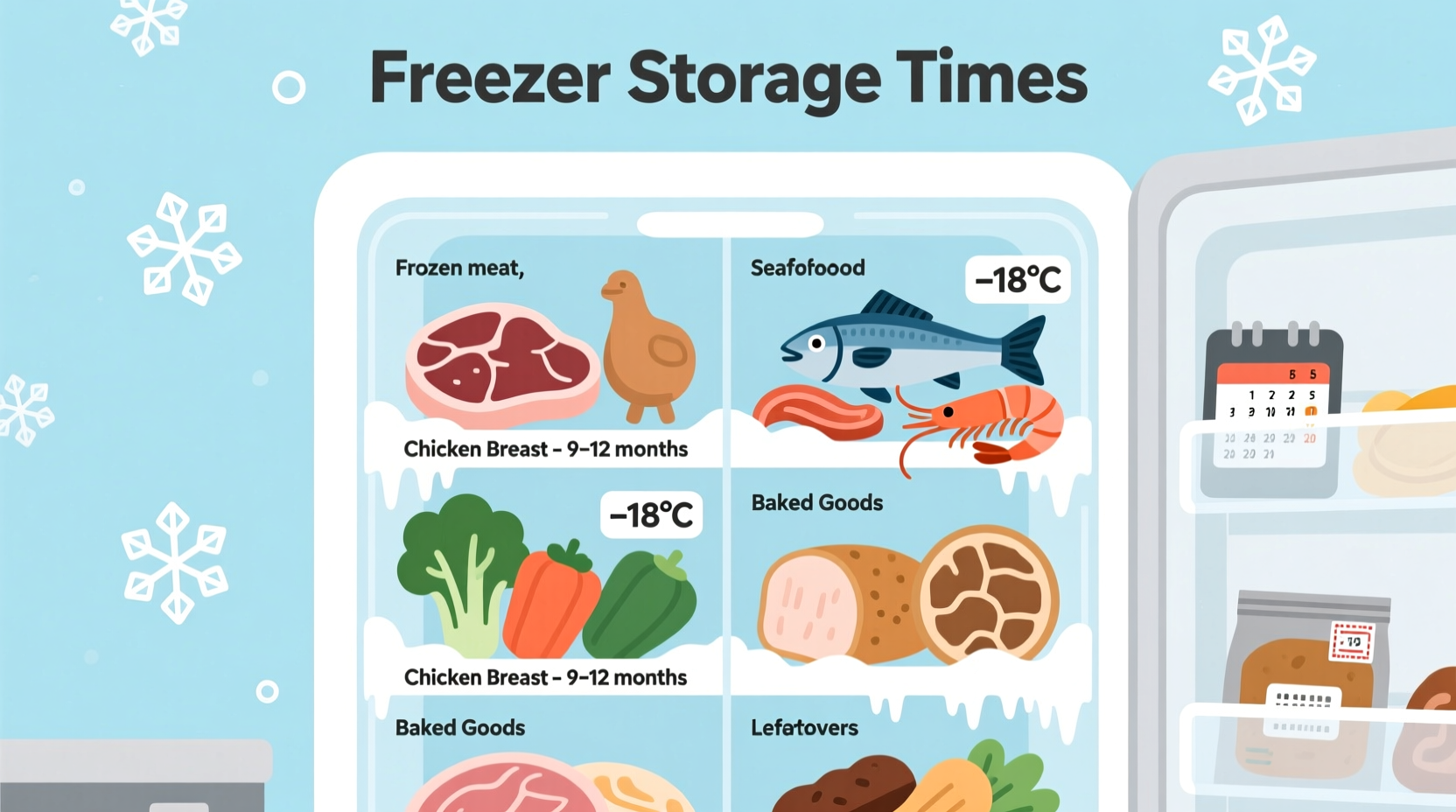Stop guessing about frozen food safety. This definitive guide delivers precise USDA-backed storage timelines for 25+ common foods, plus science-based strategies to maximize freshness and prevent waste. You'll discover exactly how long your specific foods last in the freezer, recognize quality indicators, and implement professional storage techniques that extend shelf life.
The Science Behind Freezer Storage
Freezing preserves food by slowing molecular movement that causes spoilage. At 0°F (-18°C) or below, bacteria growth stops completely, making food safe indefinitely. However, quality degradation still occurs through enzymatic reactions and freezer burn. The National Center for Home Food Preservation confirms that while frozen food never becomes unsafe, texture, flavor, and nutritional value diminish over time.
Freezer Storage Reference Guide
Proper packaging and consistent temperature are critical factors. Always use airtight containers or heavy-duty freezer bags, removing as much air as possible. Label everything with contents and date.
| Food Category | Optimal Freezer Life | Quality Warning Signs |
|---|---|---|
| Beef steaks | 6-12 months | Grayish color, dry texture |
| Poultry (whole) | Up to 1 year | Ice crystals, off odor after thawing |
| Ground meats | 3-4 months | Brown spots, rancid smell |
| Cooked meals | 2-6 months | Soggy texture, flavor loss |
| Vegetables (blanched) | 8-12 months | Mushy consistency after cooking |
| Bread products | 4-6 months | Dry, crumbly texture |
| Fruits | 8-12 months | Discoloration, syrup separation |
Maximizing Freezer Food Quality
Your freezer's performance directly impacts food longevity. The USDA Food Safety and Inspection Service emphasizes three critical factors:
Temperature Consistency
Maintain exactly 0°F (-18°C) using a dedicated freezer thermometer. Temperature fluctuations during power outages or frequent door openings accelerate quality loss. During extended outages, keep the freezer closed—a full freezer stays frozen for approximately 48 hours.
Advanced Packaging Techniques
Professional kitchens use the "double-wrap" method for meats: first in moisture-proof paper, then in heavy foil. For liquids, leave 1-inch headspace for expansion. The National Center for Home Food Preservation (nchfp.illinois.edu) confirms vacuum sealing extends quality duration by 50% compared to standard packaging.
Strategic Organization
Implement a "first in, first out" system. Store newer items behind older ones. Keep your freezer at least 75% full for optimal temperature stability, but avoid overpacking which restricts air circulation. Designate specific zones: back for long-term storage, front for items to use within 30 days.

When Freezer Burn Occurs
Freezer burn appears as grayish-brown spots caused by air exposure. While USDA confirms freezer-burned food remains safe, quality suffers. Trim affected areas before cooking. Prevent it by eliminating air pockets in packaging and maintaining consistent temperatures. Foods with higher fat content (like ground beef) show freezer burn more quickly than lean cuts.
Thawing Methods That Preserve Quality
How you thaw affects final quality. The FDA recommends three safe methods:
- Refrigerator thawing (24-48 hours): Best for quality retention but requires planning
- Cold water method: Submerge in leak-proof bag, changing water every 30 minutes
- Microwave thawing: Use immediately after thawing to prevent bacterial growth
Never thaw at room temperature. Cooked frozen meals can often go directly from freezer to oven with adjusted cooking times.
Special Considerations
Some foods don't freeze well. Cream-based sauces may separate, lettuce becomes limp, and canned goods can explode from expansion. Raw potatoes develop grainy textures. The University of Nebraska Food Safety Department notes that foods with high water content (like celery or cucumbers) become mushy after thawing.
Practical Freezer Management Tips
Implement these professional kitchen strategies:
- Conduct monthly inventory checks using the "best by" dates you've labeled
- Keep a freezer log tracking contents and dates
- Blanch vegetables before freezing to preserve color and nutrients
- Portion meals into single servings before freezing
- Use oxygen absorbers in long-term storage containers
Common Misconceptions Debunked
"Frozen food loses nutritional value" - Research from the Journal of Food Composition and Analysis shows frozen produce often retains more nutrients than fresh counterparts due to flash-freezing at peak ripeness. "Freezer temperature doesn't matter as long as it's frozen" - Even slight temperature variations above 0°F accelerate quality loss. "All packaging works the same" - Standard sandwich bags allow 50% more air transfer than freezer-specific bags according to USDA testing.
When to Discard Frozen Food
Discard food if:
- Ice crystals cover more than 25% of the surface
- Unusual odors develop after thawing
- Package shows signs of thawing and refreezing (large ice crystals)
- Exceeded maximum storage times by more than 50%











 浙公网安备
33010002000092号
浙公网安备
33010002000092号 浙B2-20120091-4
浙B2-20120091-4